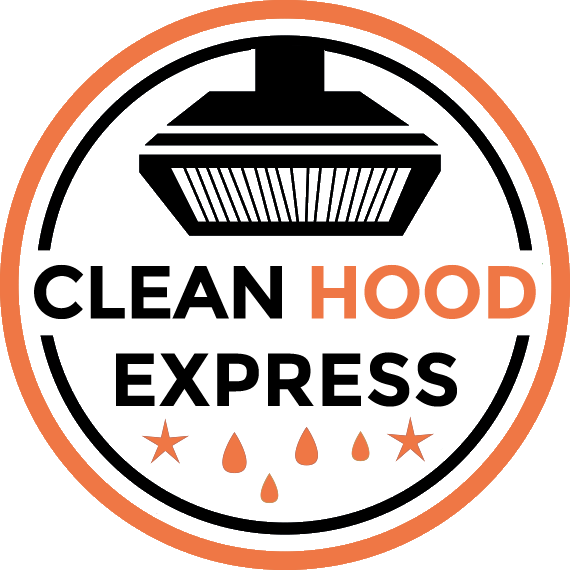Professionals will clean your commercial kitchen exhaust hoods once a month, once or quarter or once every six months depending on the type and volume of your cooking. This process is important for both low-volume and high-volume cooking operations. The kitchen hood cleaning process will leave your commercial kitchen hood in excellent working condition. If you are unsure whether your kitchen hood needs to be cleaned, you should contact a certified hood cleaning professional to determine the best way to clean your kitchen hood. The restaurant hood cleaning process can be time-consuming, but will give your commercial kitchen a more sanitary, cooler and safer environment.

|
Commercial Kitchen Exhaust Hood Cleaning
The first step in kitchen hood cleaning is to clean the filters and roof fan. The grease in kitchen filters will block the filters, so it is essential to disolve and remove all of it. For most hoods, the filters and the spark arrestors should be removed before the degreasing process. Scraping the grease from the interior of the kitchen hood with a non metal scraper per NFPA 96 is the next step in cleaning a commercial kitchen hood. A degreaser solution is used next to remove any leftover grease. Any degreaser can be used but we prefer a high pH solution with a thickening agent to increase the contact time of the hood cleaning chemicals. To clean the exhaust hood filters, you should soak them in a solution while you scrap the kitchen hood interior and address the roof fan and grease containment system.
The roof fan should be inspected for proper functioning. Utilizing the safe switch with a lock out tag out devise is best practices for safety. Inspect the kitchen hood roof fan belt for cracks and wear. As well as the bearing blocks and fan fins. Next treat the interior of the fan bowl with cleaning chemicals and scrap with a non metal scraper. Open the fan housing by tipping back on the hinges to access the duct work and the underside of the roof fan. Treat all areas of the kitchen hood roof fan and duct with cleaning chemical, then scrape, Follow up with high pressure hot water to remove all the grease and built up debris from the kitchen hood system per NFPA 96.
Once you’ve completed the kitchen hood roof fan and duct cleaning, you can move on to the next step: the cleaning of your commercial kitchen exhaust system plenum. The National Fire Protection Association (NFPA) requires operators of commercial kitchens to keep their systems free of grease buildup. The hood and filters need to be cleaned more frequently in restaurants where people perform charcoal grilling and deep-frying. The frequency of kitchen hood cleaning also depends on the type of cooking you do. For example, if you do a lot of wok cooking or deep-frying, you may need to clean your kitchen hood and filters more frequently.
A professional kitchen hood cleaner can help you prevent non-compliance by explaining the cleaning process and following NFPA 96 standards. A professional kitchen hood cleaner can help you stay in compliance with restaurant regulations and prevent costly re-installation costs. The cleaning process should include the removal of grease and other materials in the kitchen. A qualified hood cleaner can also provide you with before-and-after photos of your rig.
The final hood cleaning process starts by degreasing and polishing the exterior of the kitchen hood. Once the kitchen exhaust hood has been thoroughly cleaned, it should be checked for potential structural damage. Once the kitchen hood is clean to bare metal you can see any issues that will cause or a kitchen hood fire and can cause massive losses. So, it is best to regularly clean and inspect your commercial kitchen exhaust hood to prevent potential damages.
A commercial kitchen exhaust hood cleaning service can perform the necessary steps to protect your restaurant from fire hazards. The company will clean the ductwork by using state-of-the-art equipment and techniques. Clean Hoods Express offers emergency services for commercial kitchen hood cleaning and complies with all local, regional, and national standards. If you’re interested in starting a business, look for a service that has a proven track record of quality. You will be glad you did.
A professional commercial kitchen exhaust hood cleaning company will clean the vents, horizontal ducts, and roof containment. They will remove all debris and grease that builds up in the ducts. A certified cleaning service will also check the hoods and remove any debris in the ducts. A well-maintained commercial kitchen exhaust hood will increase your restaurant’s profitability and customer satisfaction. A certified and licensed company will provide before-and-after photos.
If you need help determining which companies to hire, you should read up on the National Fire Protection Association (NFPA) standards for commercial kitchen exhaust hood cleaning. While the NFPA requires that commercial kitchen exhaust hoses be cleaned according to the standards laid out in NFPA 96, there are several things you can consider when choosing a cleaning company. The most important is their qualifications. A certified, trained company will have the proper documents and training to make the process as easy as possible for you.
A certified hood cleaning company will be able to provide a professional service to clean your commercial kitchen exhaust hood. In addition to providing quality hood cleaning, a reputable service will also provide you with the certification you need. By following these standards, you can rest assured that your ductwork will be clean and safe for your customers. These professionals will be able to safely clean your commercial kitchen hood. It will not only make your cooking environment sanitary but also increase the safety of your employees.

0 Comments